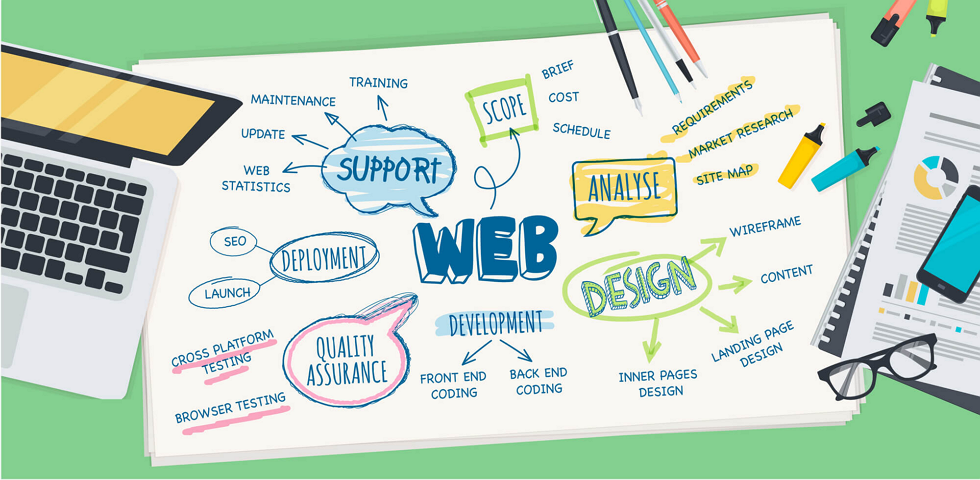
Creating a website is a crucial step for any business or individual looking to establish an online presence. You'll encounter various options, and understanding the underlying technology is essential to making the right choice. This guide will help you navigate these options and build a website that serves your needs now and in the future.
Beyond the Number of Pages:
Many people focus on the number of pages when thinking about a website. While the number of pages is a factor, it's not the defining characteristic. Technically, there's no limit to how many pages a website can have, regardless of the underlying technology. You could have a 20-page website built with simpler technologies, or a 5-page website built with more advanced technology. The cost of adding pages usually scales with the complexity and the technology used.
Think of it this way: a website is like an iceberg. What you see on the surface (the pages) is just a small portion of the whole. Beneath the surface lies the technology that powers your website, including the structure, functionality, and security. Just like an iceberg's unseen mass is crucial for its stability, the backend technology is crucial for your website's performance and scalability.
The Power of the Backend:
Consider a search engine like Google. What you see is a simple search bar. But behind that search bar lies a massive, complex infrastructure that indexes billions of web pages and delivers search results in milliseconds. Your website, even a small one, has a similar backend, though on a much smaller scale. This backend determines:
- Functionality: Can you easily add features like a contact form, a blog, an online store, or membership areas?
- Scalability: Can your website handle increased traffic and data as your business grows?
- Security: Is your website protected from cyber threats and data breaches?
- Performance: How quickly does your website load and respond to user actions?
- Maintainability: How easy is it to update and manage your website content?
Choosing the Right Technology:
Simpler technologies are suitable for very basic, static websites, like online brochures. They're often less expensive upfront. However, they can become limiting and costly in the long run if you need to add functionality or scale your website. Imagine trying to add a modern kitchen to a simple tent – it's often more efficient and cost-effective to build a small house instead.
More advanced technologies provide a robust foundation for dynamic websites with complex features and scalability. They might have a higher initial cost, but they offer more flexibility and save you money and headaches in the future. They allow you to easily add new features, integrate with other systems, and handle increased traffic without rebuilding your entire website.
Investing in Your Future:
When choosing a website, don't just focus on the present. Think about where you want your business to be in the future. A website is not a one-time project; it's an ongoing investment in your online presence. Choosing the right technology is like building a strong foundation for your house. It might cost a bit more upfront, but it will save you from costly renovations and repairs down the road.
Key Considerations:
- Your business goals: What do you want to achieve with your website?
- Future growth: How do you expect your website needs to evolve over time?
- Budget: Balance your initial budget with the long-term cost of ownership.
- Technical expertise: Do you have the in-house skills to manage a complex website, or will you need professional help?
By carefully considering these factors and understanding the importance of the underlying technology, you can build a website that not only looks good but also serves your business needs for years to come.